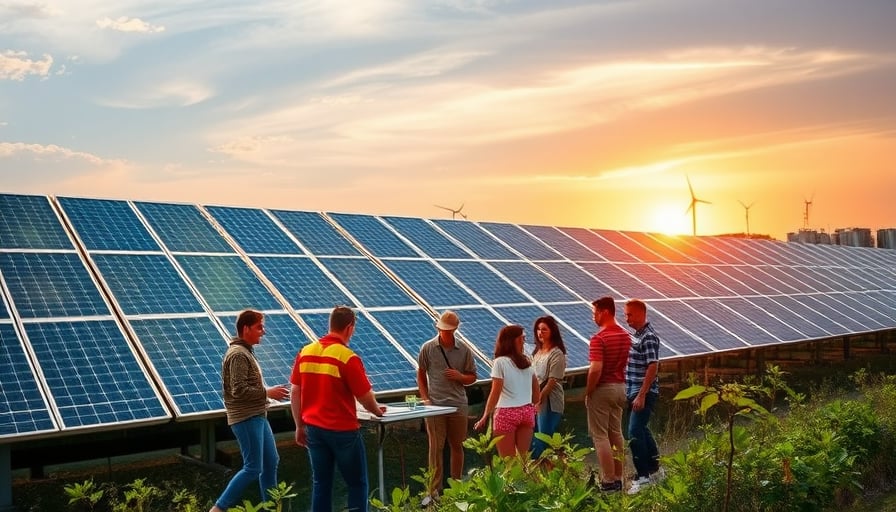Asia Allied Infrastructure Holdings Ltd: Navigating a New Era of Low‑Carbon Construction
Asia Allied Infrastructure Holdings Ltd (ASIA), a Hong Kong‑listed engineering and property‑management group, is poised to benefit from the accelerating momentum behind global carbon‑reduction initiatives. The recent launch of the China‑EU Zero‑Carbon County Cooperation Initiative in Baoting, Hainan, and China’s announcement of updated Nationally Determined Contributions (NDCs) underscore a strategic pivot toward sustainable infrastructure. For a company whose core competencies span civil, electrical, mechanical, and foundation construction, these developments present a clear pathway to reinforce its competitive positioning and unlock new revenue streams.
1. Policy Landscape and Market Signals
- China’s 2025 NDCs: The government’s updated commitments elevate China’s ambition to a net‑zero trajectory by the 2050s. The accompanying “AI+” International Cooperation Initiative signals a deliberate integration of digital twin technologies with green construction practices.
- Hainan’s Green Innovation Zone: Baoting’s designation as a county‑level test field within the China‑EU Green and Digital Innovation Cooperation Zone provides a living laboratory for low‑carbon infrastructure. The region benefits from preferential tax regimes, zero tariffs, and streamlined cross‑border data flows—conditions that reduce project lead times and cost structures.
These policy signals reinforce a broader trend: governments are increasingly willing to subsidize and incentivize construction projects that meet stringent environmental standards. For ASIA, which already offers a full spectrum of civil engineering services, this creates an avenue to diversify its portfolio toward green-certified projects.
2. Alignment with ASIA’s Core Offerings
Asia Allied’s engineering portfolio includes:
- Civil and Foundation Engineering: These disciplines are central to low‑carbon building envelopes, energy‑efficient foundations, and resilient infrastructure capable of withstanding climate impacts.
- Electrical and Mechanical Engineering: Integration of renewable energy systems (solar PV, wind turbines) and energy‑management controls aligns with the “AI+” vision of digital‑green twin transition.
- Property Management Services: Post‑construction, the group can provide ongoing sustainability audits, energy‑efficiency retrofits, and green certification maintenance—an area with high recurring revenue potential.
By leveraging its multidisciplinary expertise, ASIA can position itself as a turnkey provider of end‑to‑end green infrastructure solutions, from design through operation.
3. Competitive Advantage and Forward‑Looking Strategy
- Early Adopter Position: Given the nascent nature of China‑EU cooperation in Hainan, ASIA can secure first‑mover contracts in this pilot region, building case studies that demonstrate cost‑efficiency and performance benefits of green construction.
- Digital Twin Integration: The company’s engineering teams should invest in digital twin platforms that enable real‑time monitoring of structural health and energy performance. Such capabilities will differentiate ASIA from traditional construction competitors and attract clients seeking lifecycle optimization.
- Strategic Partnerships: Form alliances with local governments, technology providers, and research institutions in Hainan to secure joint funding and access to cutting‑edge sustainability technologies. Partnerships with European firms participating in the Green and Digital Innovation Cooperation Zone can also facilitate knowledge transfer and cross‑border project development.
- Financial Positioning: Despite a negative Price‑Earnings ratio of –2.82, ASIA’s market cap of HKD 791 million reflects a modest valuation. By aligning its project pipeline with the 2025 NDCs, the company can enhance future earnings prospects, potentially improving shareholder value and attracting ESG‑focused investors.
4. Risks and Mitigation
- Regulatory Uncertainty: While China’s commitment is clear, implementation timelines for incentives and subsidies may lag. ASIA should maintain flexibility in project scopes and budgets to absorb policy shifts.
- Technological Adoption: The “AI+” initiative relies on advanced data analytics and digital infrastructure that may be unevenly deployed across regions. Investing in in‑house capabilities and training will mitigate skill gaps.
- Competitive Pressure: As global players recognize the profitability of green construction, ASIA must protect its intellectual property and maintain cost‑competitive pricing through economies of scale and efficient project management.
5. Conclusion
The launch of the China‑EU Zero‑Carbon County Cooperation Initiative in Hainan and China’s updated NDCs signal a decisive turn toward sustainable infrastructure development. For Asia Allied Infrastructure Holdings Ltd, these policy shifts offer a clear strategic inflection point. By capitalizing on its engineering breadth, embracing digital twin technologies, and forging targeted partnerships, ASIA can transition from a traditional construction provider to a leading green infrastructure specialist. This forward‑looking approach not only aligns with global ESG imperatives but also positions the company to capture emerging market opportunities and deliver long‑term value to its stakeholders.
